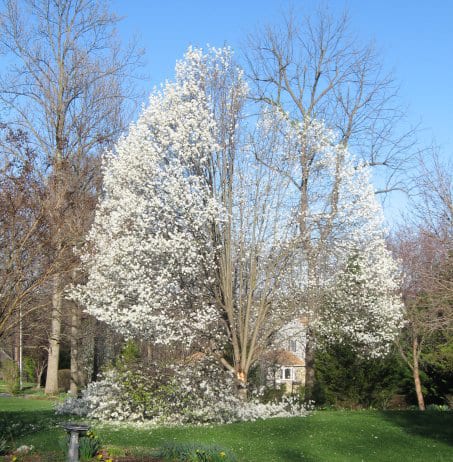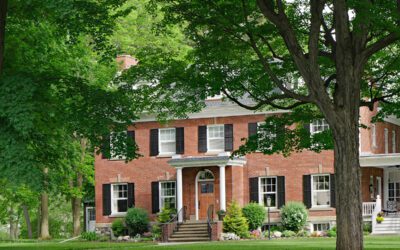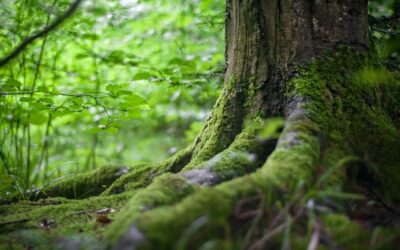When that sweltering summer sun beats down, you may find yourself wishing your yard had a little more shade. Did you know that not only can trees make it easier to enjoy your backyard, but they can actually save you money on your home’s heating and cooling bills?! Trees properly placed around your home can reduce air conditioning needs by 30% and save 20% to 50% in heating costs, according to the USDA Forest Service.
If you are looking to add a little shade, here are some trees for you to consider and one tree that you may want to avoid.
Red Oak
When it comes to large shade trees, few trees can compare to the red oak. With its tall stature, vibrant red leaves in the fall and full, rounded shape, it’s easy to see why this is a coveted tree in the Midwest.
If you’re looking for a low-maintenance, long-lived tree, red oak is definitely one to consider. These trees tolerate most well-draining soil types, and will grow best in moist, acidic to neutral soil. Plant red oaks in full sun and give them plenty of space because they will become large landscape trees. These trees can get up to 75 feet tall with a 45 foot spread when mature, so if you have a smaller yard, you may want to consider other tree options.
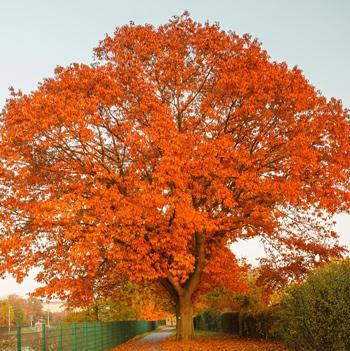
River Birch
The River Birch tree is a medium-sized shade tree, which when mature, can reach 30 to 60 feet and spreads itself just as wide. River Birch is ideal for homeowners who are looking to plant trees which offer beauty all year round, as the River Birch produces golden-yellow foliage in autumn and has a beautiful peeling white bark in the wintertime.
These trees require full sunlight and grow best in soil that drains well. They are hearty, disease resistant and well adapted to Missouri’s hot, humid summers. If you choose to plant a River Birch tree or two in your yard, a professional arborist such as Hentges Tree Service can assist you with vital information, such as where to plant a tree to help reach its full potential.
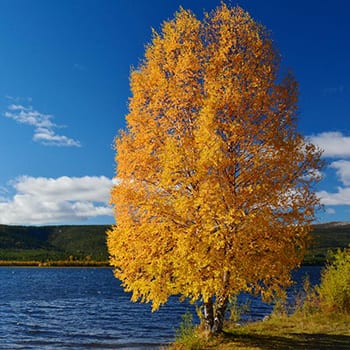
Trident Maple
The Trident Maple is a very attractive but relatively small maple, perfect for cozy yards, on patios, or for planting in rows. When mature, these trees grow to a height and spread of 30 feet, making it also a utility-friendly tree, easily maintained with regular pruning. It has interesting flaky bark and a neat appearance. Oddly enough, these shade trees are often used in bonsai practices due to their beautiful root growth and lobed leaves.
For optimal tree care, these dark green-leaved trees should be in direct sunlight for about 6 hours each day.
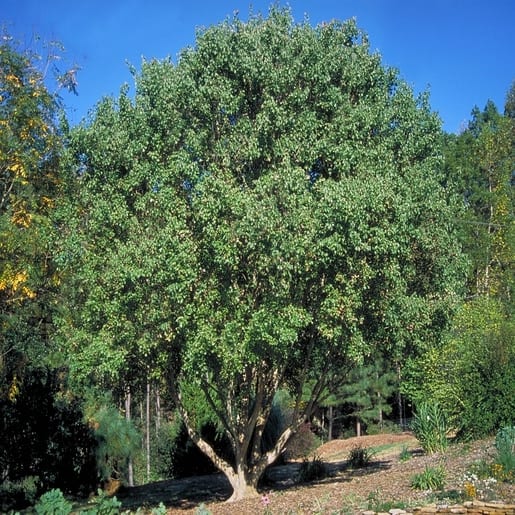
Avoid: Bradford Pear
The Bradford pear quickly became very popular in the United States around 1960 and was planted in many urban settings, especially residential developments. As an “exotic” option with beautiful spring flowers, glossy green summertime leaves and beautiful fall color, it became wildly popular. The tree soon went from “awesome” to “awful” as its weak branch attachments contributed to limbs breaking in storms and its spring flowers came with a foul odor. The worst aspect of the Bradford pear, however, was its ability to produce seeds readily consumed by birds that when dropped, grew almost any place. Bradford pears are now considered an invasive species capable of colonizing fields and wood lots and replacing completely native plants.
